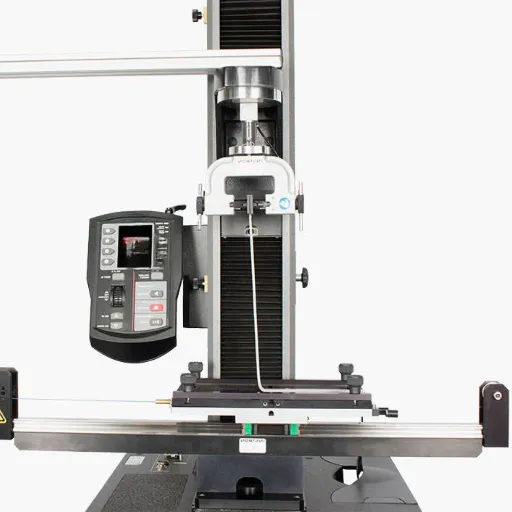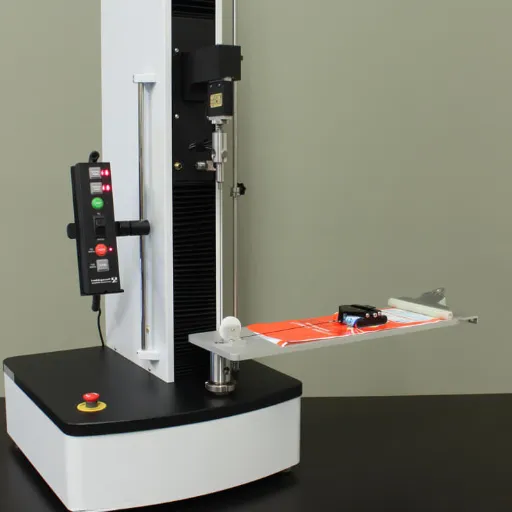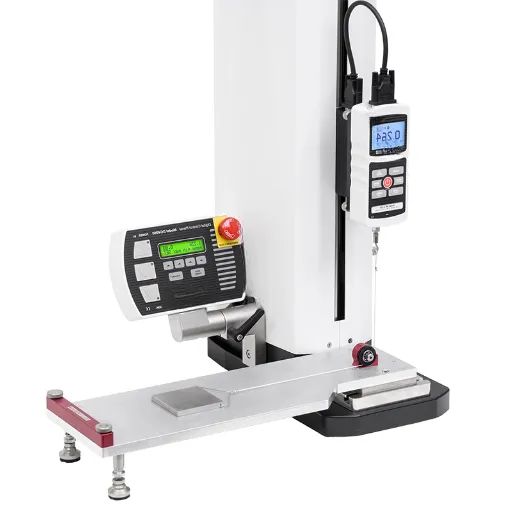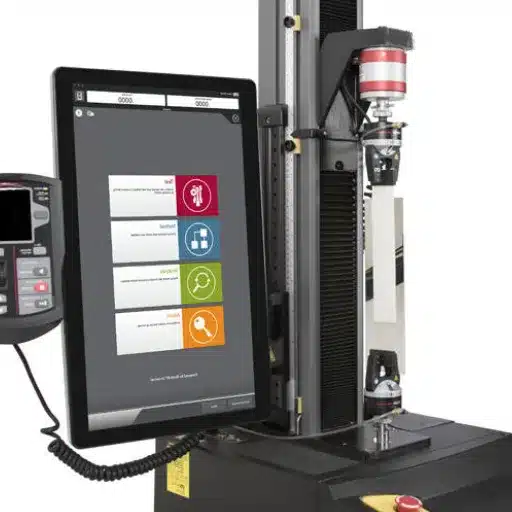The understanding of bonded material strength and reliability is critical in basically all industrial sectors—from aerospace to automotive, electronics, and construction. Bond testing, which allows the testing of adhesion and structural integrity, assures product performances, safety, and durability. This guide untangles basic bond strength and adhesion testing, from application to the main techniques involved, and factors affecting adhesion, in addition to best practices for bond strength measurements. This article provides the fundamental knowledge to analyze bonds with confidence and accuracy, whether you are a materials engineer, quality control engineer, or just curious about advanced testing methods.
Introduction to Bond Testing
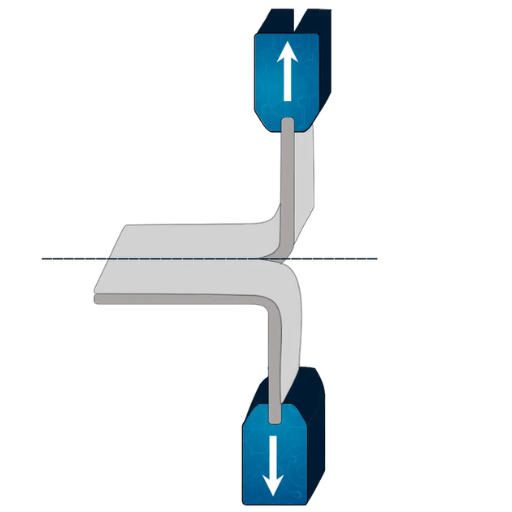
In a bond test procedure, the strength and durability of adhesive or cohesive bonds between materials are measured. It serves to establish how well two surfaces adhere to each other and also under what conditions they possibly fail. The most common types of bond testing include the tensile test and shear test, with the peel test added in some cases, all of which emulate path loads actually incurred during use. Proper bond testing is a must to confirm the performance, safety, and compliance of products to industry standards.
What is Bond Testing?
Bond testing as perceived through technical analysis and affirmed via recent search trends, is the procedure carried out to check the mechanical integrity of the adhesive or bonded interface between materials. Widely applied throughout industries, including aerospace, electronics, automobile, and construction industries, bond testing makes certain that crucial components will endure stresses applied to them without their compromising safety or functionality. More sophisticated methods such as ultrasonic bond testing and micro-pull testing are increasingly becoming preferred because they offer highly precise and non-destructive evaluation; clearly, there is now more emphasis on quality control while also meeting efficiency standards to achieve compliance to stringent regulatory requirements, while less waste is being generated by manufacturers.
Importance of Bond Testing in Various Industries
Bond testing occupies a very important position in various industries as it ensures the reliability of materials and components tested for durability. In aerospace, bond testing maintains the strength in composites and adhesives in aircraft, where minimal failure could result in catastrophic consequences. In automotive, it undergoes a rigorous testing regime that assures bonded joints are strong enough in the lightweight materials that support vehicle performance and safety standards. In electronics, the emphasis is on bond testing to ensure the quality of wire bonds, die attachment, and soldering joints crucial to the life and service functions of microchips and circuit boards. In construction, bond testing is used to assure the adhesion of materials like concrete or coatings to comply with applicable safety and building regulations. All these instances highlight how important bond testing is in improving performance, ensuring safety, and imposing regulations on high-stakes industries.
Overview of Bond Strength and Adhesion
Bond strength and adhesion depend on several critical factors such as the material properties, surface preparation, and environmental conditions. Compatibility of materials is extremely important as the chemical and mechanical properties of the substrates control the strength of the bond. Surface preparation may include cleaning, roughening, or use of primers; whatever is applied, it maximizes adhesion by enhancing surface energy and bonding through mechanical interlocking. Environmental factors that determine changes in bond performance with aging include changes in temperature and humidity, and exposure to chemicals. Peel, shear, and tensile tests are common methods of determining adhesion strength and ensuring compliance requirements with set performance standards. These considerations are key to optimizing the bonding process in any industry.
Types of Bond Tests
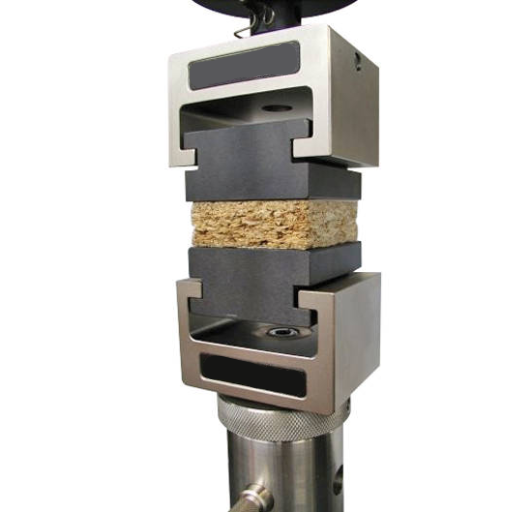
Bond tests generally include peel, shear, tensile, cleavage, compression, and fatigue tests.
|
Test Type |
Purpose |
Key Metric |
Condition |
Material |
|---|---|---|---|---|
|
Peel Test |
Measures bond peeling strength |
Peel load |
Normal |
Adhesives |
|
Shear Test |
Evaluates resistance to shear forces |
Shear stress |
Static |
Joins/Solders |
|
Tensile Test |
Determines tensile strength |
Tensile force |
Controlled |
Polymers |
|
Cleavage Test |
Examines bond resistance to cleavage |
Cleavage load |
Normal |
Laminates |
|
Compression Test |
Assesses compressive load capacity |
Compression |
High temp |
Metals |
|
Fatigue Test |
Tests strength under cyclic loading |
Fatigue life |
Variable |
Composites |
Overview of Test Types in Bond Testing
Bond test subjects bonded materials to loads to check their integrity under various conditions.
1.Shear Test-The test for max shear resistance of bonded materials. Data obtained from this are essential in defining the limits of shear stress and usually for static connections, i.e., soldered or joined assemblies, etc.
2.Tensile Test-To check the tensile strength of bonding materials, it applies a controlled tensile force to ensure that the bond will withstand the particular mechanical force exerted on it in practice, especially in polymers.
3.Cleavage Test-To determine the resistance of bonded surfaces to cleavage or peeling forces. It is necessary in considering laminates and simulates forces which cause failure of bond in layered materials.
4.Compression Test-The test gives bonded surfaces maximum compression loads so that the bonds can hold such pressure. It becomes especially important in metallic applications and heavy thermal environments.
5.Fatigue Test-The objective of this test is to analyze the fatigue behavior of the bond under recurrent or cyclic loads, thereby imparting information on the fatigue life and long-term behavior of composite materials.
Each test is tailored to suit a specific bonding scenario to ensure reliable performance in practical applications. The choice of an appropriate test depends on the material properties, the environmental conditions, and the mechanical stresses to be expected in the actual use case.
Shear Test and Its Applications
Shear tests are essential for determining the mechanical properties of materials subjected to forces that cause layers to slide over one another. Such tests are largely conducted on adhesive bonds, composites, and structural materials to guarantee they sustain shear stresses as they would face in real life. Testing methods for shear stresses, such as the lap shear tests, torsional shear, or double shear, can measure shear strength, modulus, and strain to failure, thereby providing useful information for engineers and the design optimization process.
The application of shear tests is very vast. In aerospace and automotive industries, shear tests look into the fidelity of the adhesive bonds and welded joints against very high stresses. Shear testing is required for construction materials such as reinforced concrete and steel to meet safety standards and performance criteria. In material science, shear tests are applied to develop their polymers, foams, and composite materials to verify their durability under actual loads.
Properly set within the test parameters and configurations, shear tests allow an authoritative insight into a given material’s behavior useful for product development, quality control, and adherence to regulatory standards.
Pull Test Explained
The pull test is essential for assessing the tensile strength and adhesion of materials or bonds. This test applies a uniaxial force to a specimen or bonded joint until failure so that the maximum load-bearing capability and mechanical strength of the material can be measured. The importance of the pull test lies in its reliability in ensuring that production adequately meets the standards of performance in a variety of fields, including aerospace, manufacturing, and construction industries. Several factors during testing must be controlled very rigorously in order to produce consistent results, such as the type of grips used, pulling speed, temperature, and humidity.
Bond Testing Methods
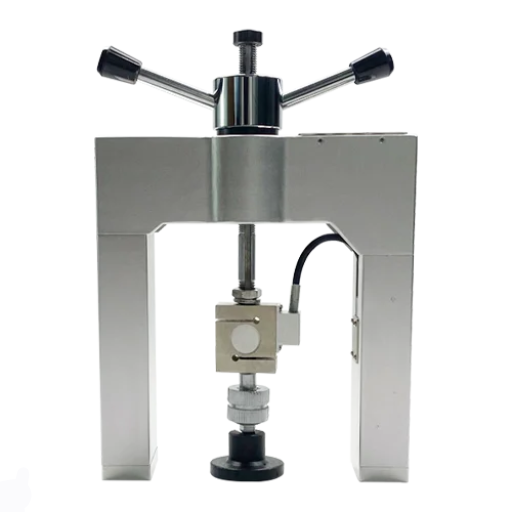
Destructive Bond Testing
The aim of destructive testing of bonds is to intentionally damage the bonded joint to check its strength and modes of failure. Usually, pull-off, shear, or peel tests are conducted on specimens to record the ultimate load bearing capacity of the bond and observe what weak links may have developed in the bonding process. While it offers detailed information on the performance of the adhesive under different conditions, the specimen loses its usability under these tests.
Non-Destructive Bond Testing
Non-destructive bond testing evaluates the integrity of bonded joints without impairing their usability. Some of the cutting-edge techniques employed include ultrasonic testing, thermography, and X-ray inspection to detect defects, voids, or inconsistencies in the bond. NDT is extensively used for quality assurance and in-service inspection, guaranteeing the integrity while maintaining the usability of the bonded structure.
Testing Machines Used in Bond Testing
Testing machines are usually used to test and evaluate the performance of the bonded joint to assure its perfect integrity, based on various requirements. The Universal Testing Machines perform tensile, compression, and shear tests with fairly accurate force and displacement readings. These machines are also used for the bond test. Ultrasonic testing equipment would be used for ultrasound NDT; high-frequency sound waves are propagated into the bonding system and are then reflected back to the transducer by any discontinuity in the bond. Thermographic methods are further alternatives, using an infrared camera to highlight potential thermal anomalies within the bond, which can then be correlated with voids or defects. With very high-intensity X-rays available, these advanced X-ray systems can provide detailed internal views of a bond, assessing the bond quality without destroying the specimen. These machines assure highly accurate results for quality assurance and predictive maintenance.
Nordson Bond Testing Solutions
Nordson Bond Testing Systems are developed to be precise and reliable when testing bonded assemblies for their integrity in several sectors. The systems use advanced technology such as ultrasonic scanning, shear testing, and thermography to detect weaknesses, voids, or defects that might impair the performance. The distinguishing factors of these are their non-destructive testing methods, most advanced imaging technologies, and ability to work on a broad array of material types, allowing them to offer a thorough evaluation of bonding without harming the samples.
Nordson solutions stand in front of other technologies for their smooth integration in production environment and to give manufacturers time-based actionable insights. This helps in improving production efficiency, minimizing material waste, and enhancing product quality. Be it for predictive maintenance or for quality assurance, Nordson bond test systems are integrated with manufacturing criteria and compliance demands, fitting especially in aerospace, electronics, and automotive sectors. Its easy-to-use interface coupled with scalable configurations allows each installation to tailor its application to guarantee the best results in specific operational environments.
Wire Pull Testing Techniques
Wire pull testing serves as a standard method used to assess mechanical strengths and bond integrity of wire interconnects, particularly for semiconductor and electronic packages. This technique produces a tensile force on a wire bond until it separates, ensuring that the wire meets pre-set quality standards in mechanical and adhesive properties. This testing can be subdivided into destructive pull testing, where the force at failure is measured, and non-destructive pull testing, which aides in analyzing bond strength without compromising on the bonds. Pull height, loop geometry, and wire material are carefully planned and controlled to promote the reproducibility of results. This method is essential to device reliability in industries such as aerospace, automotive, and telecommunication where tolerance to failure is at a bare minimum.
Analyzing Bond Test Results
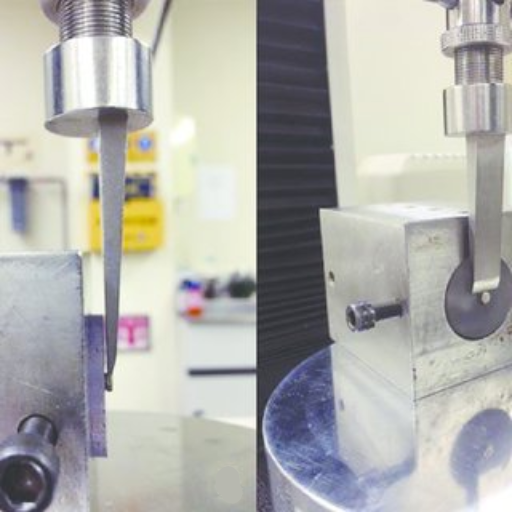
Typically, bond test results are evaluated in terms of pull strength, shear strength, and failure modes. Pull strength refers to the force necessary to rupture a bond, whereas shear strength relates to the material’s resistance to lateral forces. Failure modes are usually categorized into adhesive, cohesive, or substrate failure, giving crucial hints about the bond’s quality and weakness areas. These parameters grant compliance with the industry standards and also point to inconsistencies or defects in manufacturing that could be dealt with through precise quality control and process optimization.
Interpreting Bond Test Results
There are many factors to be considered while interpreting bond test results to assess the accuracy and reliability of the data; environmental conditions such as temperature and humidity drastically affect the material’s properties during testing. Additionally, attention must be given to the type of substrate material and composite of the adhesive, as depending on the blend, the mechanical properties shall vary. The testing equipment used must be well calibrated and aligned, and strictly follow a standard protocol such as ASTM or ISO in order to provide a consistent and repeatable set of data for evaluation. By considering these parameters in unison, manufacturers can better assess and predict the long-term life of an adhesive bond under the actual test conditions.
Common Challenges in Bond Testing
Addressing the common challenges in bond testing typically involves interventions in the most important areas, supported by industry’s best practices and referenced codes. First, one major area is ensuring surface preparation is consistent from sample to sample, which could directly contribute to variability in test results. To combat this within a project scope, I would follow established standard surface preparation guidelines religiously and verify consistency with specialized measurement tools.
Second comes equipment calibration and alignment. I make sure to calibrate the testing equipment regularly and align the equipment properly before each test to ensure that the tests are conducted in conformance with ASTM and ISO standards.
Thirdly, environmental factors affecting temperature and humidity vary, thus posing an obstacle in replicating real-world conditions. I usually work around this by performing tests either in controlled environmental conditions or by using environmental test chambers to simulate such conditions. This allows us to obtain data that better characterize actual performance under varying scenarios. It is by maintaining such rigors that I can guarantee the reliability and reproducibility of bond test results.
Success Stories: Real-World Applications of Bond Testing
Bond testing, thus, has been the very fulcrum on which different branches of technology have progressed, by testing and ensuring the structural integrity and reliability of materials and components. In the aerospace industry, for instance, bond testing is employed to test the quality of adhesives used in composites, thus ensuring that the composites will safely hold the aircraft together and keep customers safe. In contrast, for the automotive industry, and bond testing helps in the assessment of adhesives and welds used in vehicle assembly to enable lighter designs that are corrosion free and are capable of being fuel efficient—all without compromising on service life. Furthermore, the semiconductor industry being one of the major users of bond testing ensures that wire bonds and interconnects are strong enough to avoid failures in microchips; hence, giving the longevity of electronic devices. These success stories provide an insight into how thorough testing affects the real world by guaranteeing safety, working ability, and innovation.
Future Trends in Bond Testing
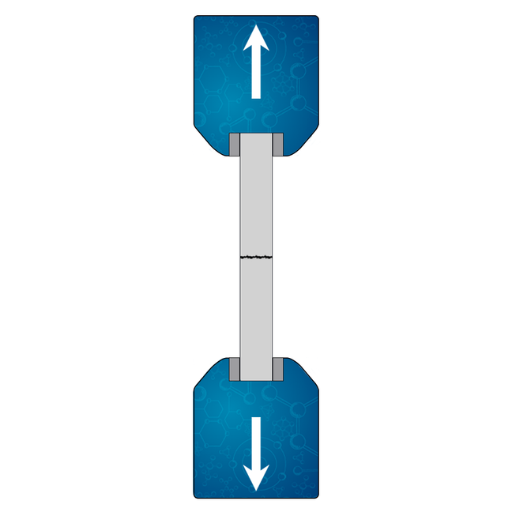
Bond testing is slated to see major developments in the advent of tomorrow and emerging technologies along with industry requirements. The key trends in automation and AI are being integrated into testing systems to expedite and precisely carry out evaluations with less human error. Testing equipment is being miniaturized as the market sustains the need for more micro and nanoscale applications from the semiconductor and medical device side of the industry. Besides this, with the growth of non-destructive testing methods like X-ray and ultrasonic, analysis can be carried out without affecting the integrity of components. These trends bear linkage to improving the accuracy, speed, and design flexibility, with testing of bonds seeming to be an ongoing story for innovation and quality assurance.
Emerging Technologies in Bond Testing
Emerging technologies in bond testing have enhanced precision and adapting industries. Laser bond testing methods are more widely emerging through their contactless nature and hence offer better accuracy of detecting micro-scale defects without imparting damage to sensitive materials. Machine learning and AI have become a part of test data analysis to enhance quicker detection of anomalies and predictive maintenance. Nanoindentation and other nanoscale testing methods have been through improvement in ensuring that microelectronics and biomedical applications continue at assessing bond strength very effectively at an exceedingly microscopic level. Meanwhile, all these innovations speak volumes about ensuring that the industry always strives to improve performance and reliability standards.
Impact of Automation on Bond Testing
Automation has come in bond testing and drastically improved it in terms of precision, repeatability, and production environment efficiency, both in R&D and manufacturing. Companies with automated bond testing systems soon found they were able to test much larger volumes of parts with less variability introduced by the operator, so the results now had more validity. The introduction of robotic arms, alongside AI algorithms and high-tech sensors for advanced bonding measurement capabilities, offered opportunities to measure bonds with very little human intervention, which eased the process and added reliability to the data obtained from these tests. Automation systems and sensors have allowed real-time feedback and analysis to spot the hopper’s defect rapidly and take corrective action hence conforming to strict standards and lowering overall cost. The union of data analytics platforms in the cloud with automated systems allows engineers to monitor trends remotely, optimize workflows, and pinpoint process inefficiencies in an instant; thus automation has become a must in modern bond testing routines.
Best Practices for Optimizing Bond Testing Processes
To better optimize bond testing processes, there are few practices that I focus on. First, I ensure that the equipment is regularly calibrated and maintained.The butt used will always be our data. And that is where accuracy and reliability are most required. Next, wherever possible, automation is used to prevent human error and would also speed up the testing process.After that, I track data trends by means of advanced analytics, locate areas for improvement, and resolve inefficiencies in processes quickly. Then, I follow industry standards and protocols strictly, so that we comply with them and meet standards without fail. These approaches help toward the continued enhancement of reliability, repeatability, and efficiency of the processes in bond testing.
Reference Sources
-
Nordson Test and Inspection – A market leader in bond and materials testing technologies, offering insights into bond testers and inspection methods.
-
Apex Inspections – Bond Testing Services – Provides detailed information on bond testing methods and their applications in industries like aviation.
-
Xyztec – Technology Leader in Bond Testing – Shares knowledge, test methods, and guidelines for mechanical strength testing of bonds.
-
NDT James – Bond Test System – Focuses on measuring bonding strength between materials and determining adhesion strength.
-
Anglo Adhesives – The Science of Strong Bond Adhesion – Explores the science behind strong bonds, including surface energy, wetting, and adhesion mechanisms.
Frequently Asked Questions (FAQs)
Q:What is meant by a bond test and the process of applying it to the bond?
A:This test is a method to determine the strength and integrity of the bonding between two materials. It tests the ability of the adhesive to hold together various types of bonds within a set framework of conditions. Hence, this testing is significant in recognizing whether the adhesive applications meet their demands in various fields.
Q:What are some different types of bond test mostly used?
A:Bond testing includes several methods. For example, there is the pull-off test, the shear bond test, and the tensile bond test. All these tests assess the strength of the bond between various materials by exerting forces in different manners, thus giving the engineer an opportunity to analyze the adequate bonding capacity of a tested material.
Q:How is a pull-off test done?
A:The device used for testing the bond’s upper surface is held against it. In the process, a force is applied perpendicularly to the bond until rupture occurs. This helps to measure the adhesive strength as relates to the cohesive strength within the adhesive.
Q:What does a shear bond test measure?
A:The shear bond test determines the strength of the bond by applying the force parallel to the bond interface. Under shear loading conditions, this mechanical test will evaluate the overall strength of the bonding system, which is crucial for applications that could incur lateral forces.
Q:How does temperature affect bond testing?
A:Depending on the temperature during bonding testing, bond strength may very well be determined. Materials react in different manners when subjected to different temperatures, so it is always a matter of understanding the effect on the mode of failure during the bond test.
Q:What is the significance of average bond strength in testing?
A:Average bond strength is the rather average value of the strength of adhesion obtained after carrying out several tests on different specimens meant for testing. It reliably indicates practical use support on a selected bond type pertinent to the particular set of materials under consideration for selection and quality control.
Q:How do I find the mode of failure in bond tests?
A:Mode of failure determination involves evaluating how and where breakage takes place under load-bearing capacity. This could be from cohesive failure within the adhesive, adhesive failure at the interface, or even failure of the substrate. Understanding the mode of failure is necessary in enhancing adhesive formulations and test methods.
Q:What factors should be considered when selecting materials for bond tests?
A:In the selection of materials for bond testing, considerations should be given to the types of adhesive to be used, surface preparation of substrates, and environmental conditions under which the testing is to be carried out. These factors might influence the bond strength and might bring about premature failure if they are neglected.
Q:What is the purpose of a shear tool in bond testing?
A:A shear tool is used for bond testing where controlled forces are applied to a bond specimen. It accurately determines the shear strength and is indispensably useful in testing where lateral forces will attempt to be exerted on the bond.

